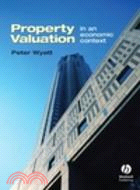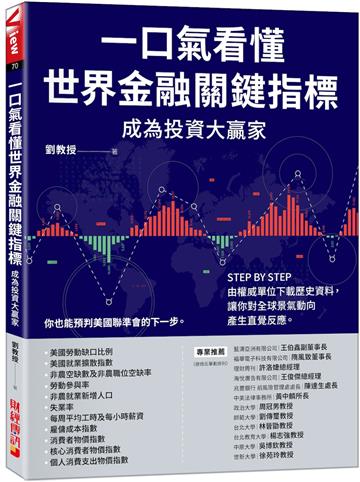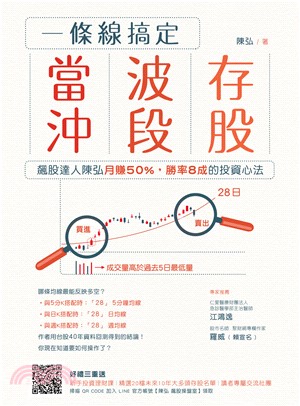商品簡介
作者簡介
目次
相關商品
商品簡介
This book provides a single text for postgraduate study of valuation on real estate courses. After a general introduction to the property market and the economic ideas that underlie valuation, it introduces the theory of valuation as a set of analysis techniques for identifying and understanding market signals in a financial context. The final section of the book, describes the three categories of market players who rely on valuation advice – the developer, investor and occupier.
'all in one' text for postgraduate study of valuation on real estate courses
● sets valuation in its business finance context
● User-friendly and accessible format using tried and tested teaching and learning devices
● Balanced treatment of theory and practice – with extensive use of examples
● Accompanying website with applications: www.blackwellpublishing.com/wyatt
'all in one' text for postgraduate study of valuation on real estate courses
● sets valuation in its business finance context
● User-friendly and accessible format using tried and tested teaching and learning devices
● Balanced treatment of theory and practice – with extensive use of examples
● Accompanying website with applications: www.blackwellpublishing.com/wyatt
作者簡介
Peter Wyatt senior lecturer at the School of the Built Environment, University of the West of England.
目次
Preface.
1 The economics of property value.
1.1 Introduction.
1.2 Microeconomic concepts.
1.2.1 Supply and demand, markets and equilibrium price determination.
1.2.2 The property market and price determination.
1.2.3 Location and land use.
1.3 Macroeconomic concepts.
1.3.1 The commercial property market.
1.3.2 Property occupation.
1.3.3 Property investment.
1.3.4 Property development.
1.3.5 Macroeconomic cycles.
Appendix 1A Measuring property investment performance.
2 Property valuation principles.
2.1 Introduction.
2.2 What is valuation?.
2.2.1 The need for valuations.
2.2.2 Types of properties that need to be valued.
2.2.3 Bases of value.
2.3 Determinants of value.
2.3.1 Property-specific factors.
2.3.2 Market-related factors.
2.4 Valuation mathematics.
2.4.1 The time value of money.
2.4.2 Yields and rates of return.
2.5 Valuation process.
2.5.1 Specific valuation standards.
2.5.2 Measurement.
Appendix 2A Inspection checklist.
Appendix 2B Specimen report for the valuation of an office.
3 Property valuation methods.
3.1 Introduction.
3.2 Comparison method.
3.2.1 Sources of data.
3.2.2 Units of comparison.
3.2.3 Comparison adjustment.
3.3 Investment method.
3.3.1 Valuation of rack-rented freehold property investments.
3.3.2 Valuation of reversionary freehold property investments.
3.3.3 Valuation of leasehold property investments.
3.3.4 Investment method case study – valuation of an edge-of-town office building.
3.4 Profits method.
3.5 Residual method.
3.6 Replacement cost method.
3.7 Summary.
Appendix 3A Alternative methods of calculating an equivalent yield.
4 Property occupation valuation.
4.1 Introduction.
4.2 Rental valuations at lease commencement and at rent reviews.
4.2.1 Rent-free periods.
4.2.2 Premiums and reverse premiums.
4.2.3 Capital contributions.
4.2.4 Stepped rents.
4.2.5 Short leases and leases with break options.
4.2.6 Turnover rents.
4.3 Valuations at lease end or lease renewal.
4.3.1 Landlord and tenant legislation valuations.
4.3.2 Surrender and renewal of leases.
4.4 Capital valuations for financial reporting.
4.4.1 International financial reporting standards.
4.4.2 UK financial reporting standards.
4.4.3 Methods of valuing property assets for financial reporting purposes.
4.5 Valuations for loan security.
4.6 Valuations for tax purposes.
4.6.1 Capital gains tax.
4.6.2 Inheritance tax.
4.6.3 Business rates.
4.7 Valuations for compulsory purchase and compensation.
4.7.1 Compensation for land taken.
4.7.2 Severance and injurious affection.
4.7.3 Disturbance compensation.
4.7.4 Planning compensation.
4.7.5 A note on CGT and compensation for compulsory acquisition.
4.8 Valuation of contaminated land.
5 Property investment valuation.
5.1 Introduction.
5.2 A discounted cash-flow (DCF) valuation model.
5.2.1 Constructing a DCF valuation model.
5.2.2 Key variables in the DCF valuation model.
5.2.3 Applying the DCF valuation model.
5.2.4 Case study – valuation of a city centre office block.
5.3 Valuing contemporary property investments using ARY and DCF valuation techniques.
5.3.1 Short leases and leases with break clauses.
5.3.2 Over-rented property investments.
5.4 Advanced property investment valuation techniques for dealing with uncertainty in valuations.
5.4.1 Valuation accuracy, variance and uncertainty.
5.4.2 Sensitivity analysis.
5.4.3 Scenario testing and discrete probability modelling.
5.4.4 Continuous probability modelling and simulation.
5.4.5 Arbitrage.
Appendix 5A DCF investment valuation methods literature.
Appendix 5B A statistics refresher.
6 Property development valuation.
6.1 Introduction.
6.2 The economics of property development.
6.2.1 Property development activity.
6.2.2 Type and density of property development.
6.2.3 The timing of redevelopment.
6.2.4 Depreciation in the value of existing buildings.
6.3 Residual development valuation.
6.3.1 Case study – valuation of a development site in Bristol.
6.3.2 Problems with the residual method.
6.3.3 Marriage gain and the merger of interests.
6.4 Residual profit valuation.
6.5 Cash-flow land and profit valuations.
6.5.1 Cash-flow land valuation.
6.5.2 Cash-flow profit valuation.
6.6 Development risk.
6.6.1 Risk analysis.
6.6.2 Risk management.
Appendix 6A Development appraisal of a mixed use development.
7 Property appraisal.
7.1 Introduction.
7.2 Property investment appraisal.
7.2.1 Appraisal information and assumptions.
7.2.2 Appraisal methodology.
7.2.3 Risk analysis in property investment appraisal.
7.3 Property occupation appraisal.
7.3.1 Business property appraisals.
7.3.2 Business property performance measurement.
7.4 Financing property investment.
7.4.1 Property funding.
7.4.2 Risk management in property financing.
7.4.3 Indirect property investment.
Glossary.
Index.
1 The economics of property value.
1.1 Introduction.
1.2 Microeconomic concepts.
1.2.1 Supply and demand, markets and equilibrium price determination.
1.2.2 The property market and price determination.
1.2.3 Location and land use.
1.3 Macroeconomic concepts.
1.3.1 The commercial property market.
1.3.2 Property occupation.
1.3.3 Property investment.
1.3.4 Property development.
1.3.5 Macroeconomic cycles.
Appendix 1A Measuring property investment performance.
2 Property valuation principles.
2.1 Introduction.
2.2 What is valuation?.
2.2.1 The need for valuations.
2.2.2 Types of properties that need to be valued.
2.2.3 Bases of value.
2.3 Determinants of value.
2.3.1 Property-specific factors.
2.3.2 Market-related factors.
2.4 Valuation mathematics.
2.4.1 The time value of money.
2.4.2 Yields and rates of return.
2.5 Valuation process.
2.5.1 Specific valuation standards.
2.5.2 Measurement.
Appendix 2A Inspection checklist.
Appendix 2B Specimen report for the valuation of an office.
3 Property valuation methods.
3.1 Introduction.
3.2 Comparison method.
3.2.1 Sources of data.
3.2.2 Units of comparison.
3.2.3 Comparison adjustment.
3.3 Investment method.
3.3.1 Valuation of rack-rented freehold property investments.
3.3.2 Valuation of reversionary freehold property investments.
3.3.3 Valuation of leasehold property investments.
3.3.4 Investment method case study – valuation of an edge-of-town office building.
3.4 Profits method.
3.5 Residual method.
3.6 Replacement cost method.
3.7 Summary.
Appendix 3A Alternative methods of calculating an equivalent yield.
4 Property occupation valuation.
4.1 Introduction.
4.2 Rental valuations at lease commencement and at rent reviews.
4.2.1 Rent-free periods.
4.2.2 Premiums and reverse premiums.
4.2.3 Capital contributions.
4.2.4 Stepped rents.
4.2.5 Short leases and leases with break options.
4.2.6 Turnover rents.
4.3 Valuations at lease end or lease renewal.
4.3.1 Landlord and tenant legislation valuations.
4.3.2 Surrender and renewal of leases.
4.4 Capital valuations for financial reporting.
4.4.1 International financial reporting standards.
4.4.2 UK financial reporting standards.
4.4.3 Methods of valuing property assets for financial reporting purposes.
4.5 Valuations for loan security.
4.6 Valuations for tax purposes.
4.6.1 Capital gains tax.
4.6.2 Inheritance tax.
4.6.3 Business rates.
4.7 Valuations for compulsory purchase and compensation.
4.7.1 Compensation for land taken.
4.7.2 Severance and injurious affection.
4.7.3 Disturbance compensation.
4.7.4 Planning compensation.
4.7.5 A note on CGT and compensation for compulsory acquisition.
4.8 Valuation of contaminated land.
5 Property investment valuation.
5.1 Introduction.
5.2 A discounted cash-flow (DCF) valuation model.
5.2.1 Constructing a DCF valuation model.
5.2.2 Key variables in the DCF valuation model.
5.2.3 Applying the DCF valuation model.
5.2.4 Case study – valuation of a city centre office block.
5.3 Valuing contemporary property investments using ARY and DCF valuation techniques.
5.3.1 Short leases and leases with break clauses.
5.3.2 Over-rented property investments.
5.4 Advanced property investment valuation techniques for dealing with uncertainty in valuations.
5.4.1 Valuation accuracy, variance and uncertainty.
5.4.2 Sensitivity analysis.
5.4.3 Scenario testing and discrete probability modelling.
5.4.4 Continuous probability modelling and simulation.
5.4.5 Arbitrage.
Appendix 5A DCF investment valuation methods literature.
Appendix 5B A statistics refresher.
6 Property development valuation.
6.1 Introduction.
6.2 The economics of property development.
6.2.1 Property development activity.
6.2.2 Type and density of property development.
6.2.3 The timing of redevelopment.
6.2.4 Depreciation in the value of existing buildings.
6.3 Residual development valuation.
6.3.1 Case study – valuation of a development site in Bristol.
6.3.2 Problems with the residual method.
6.3.3 Marriage gain and the merger of interests.
6.4 Residual profit valuation.
6.5 Cash-flow land and profit valuations.
6.5.1 Cash-flow land valuation.
6.5.2 Cash-flow profit valuation.
6.6 Development risk.
6.6.1 Risk analysis.
6.6.2 Risk management.
Appendix 6A Development appraisal of a mixed use development.
7 Property appraisal.
7.1 Introduction.
7.2 Property investment appraisal.
7.2.1 Appraisal information and assumptions.
7.2.2 Appraisal methodology.
7.2.3 Risk analysis in property investment appraisal.
7.3 Property occupation appraisal.
7.3.1 Business property appraisals.
7.3.2 Business property performance measurement.
7.4 Financing property investment.
7.4.1 Property funding.
7.4.2 Risk management in property financing.
7.4.3 Indirect property investment.
Glossary.
Index.
主題書展
更多
主題書展
更多書展今日66折
您曾經瀏覽過的商品
購物須知
為了保護您的權益,「三民網路書店」提供會員七日商品鑑賞期(收到商品為起始日)。
若要辦理退貨,請在商品鑑賞期內寄回,且商品必須是全新狀態與完整包裝(商品、附件、發票、隨貨贈品等)否則恕不接受退貨。
























